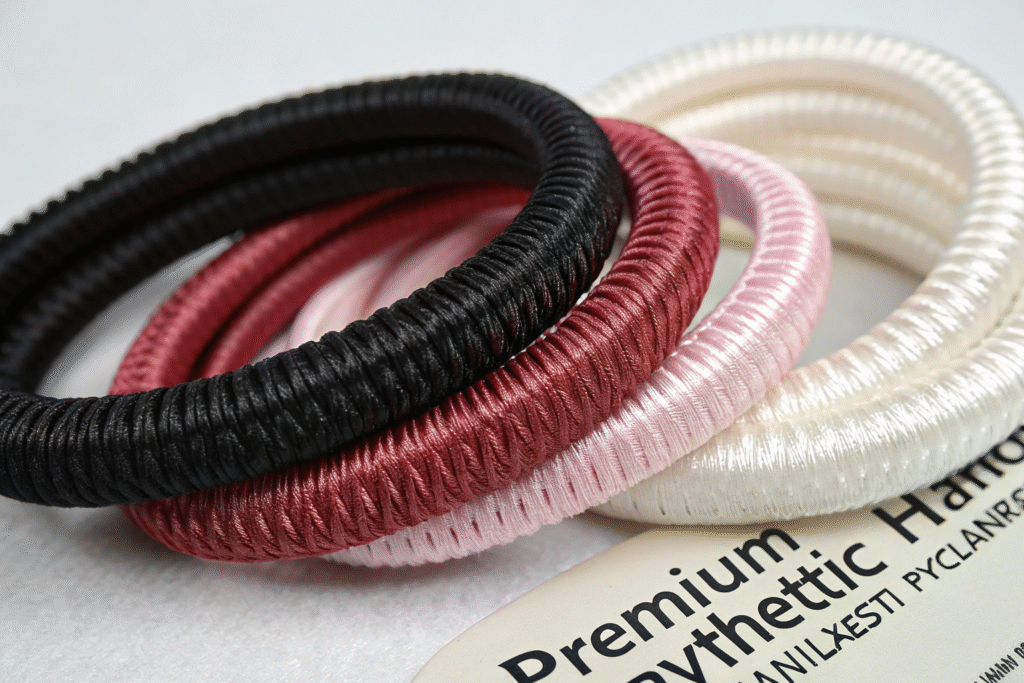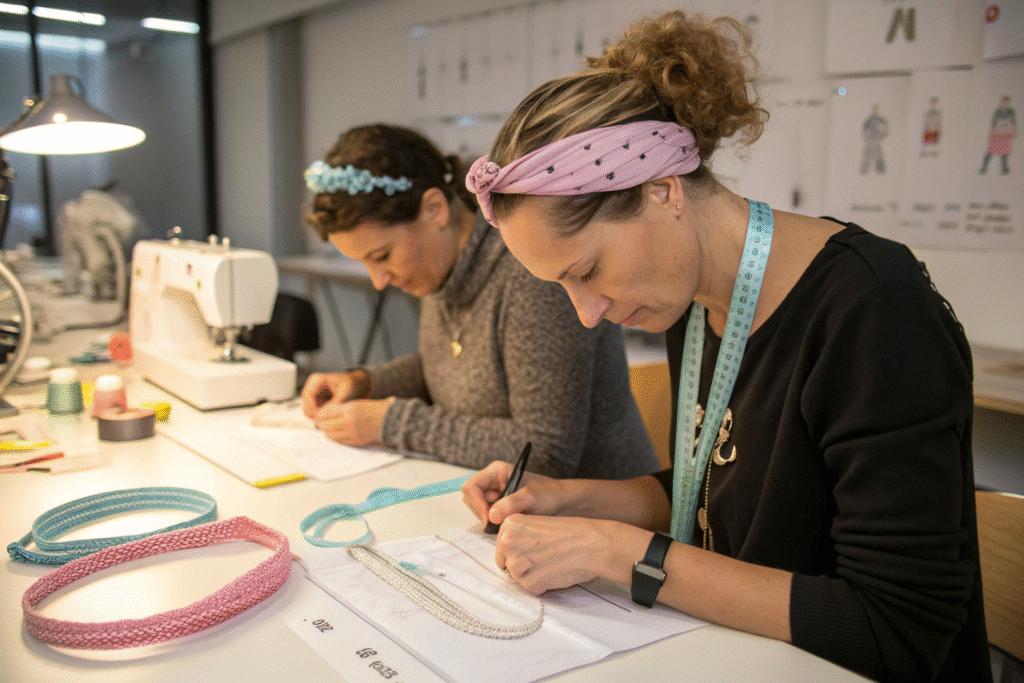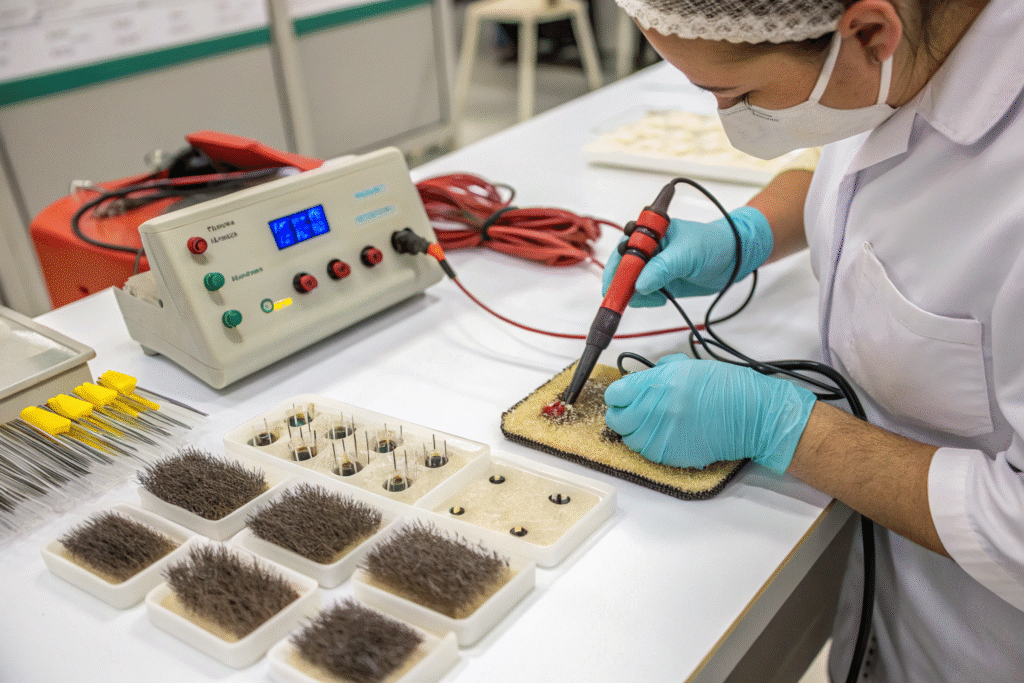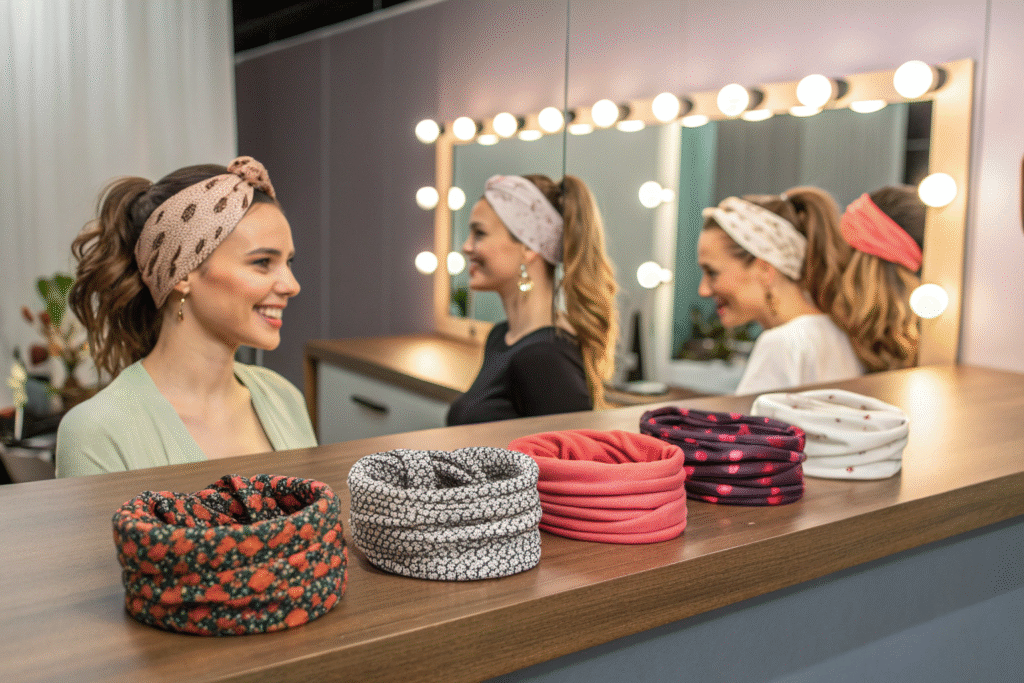As someone who has spent years manufacturing and exporting fashion hair accessories, I know that static electricity can be a hidden enemy in synthetic materials. Whether you are an online store owner, a wholesale buyer, or a sourcing manager, you have probably seen how static can make hair bands cling awkwardly or cause frizz, frustrating your customers.
The good news is, there are specific ways to source synthetic hair bands with advanced anti-static features, and I’m going to show you where to find them and what to look for in suppliers.
If you want your hair accessories to stand out in competitive markets like the US, Europe, and Russia, this guide will help you choose the right anti-static technology and connect with the right manufacturers.
Best Materials for Anti-Static Hair Bands
Static issues often start with the wrong choice of material. In synthetic hair bands, polyester, nylon, and spandex blends dominate because they are affordable and durable. However, untreated versions can attract static, especially in dry winter air.
The solution is to source fabrics that have undergone anti-static finishing treatments. These treatments can be chemical (coating fibers with a conductive layer) or mechanical (integrating carbon or metallic threads).
By working directly with factories that own their fabric treatment lines, like ours, you ensure both consistent quality and better control over production speed.

How Do Anti-Static Finishes Work?
Anti-static finishes reduce surface resistance, allowing static charges to dissipate. This prevents the “cling” effect and makes the hair band more comfortable. Treatments include carbon-infused yarns and cationic softeners.
You can read more about textile finishing techniques on Textile Learner and anti-static fiber technology at ScienceDirect.
Which Fabrics Work Best in Humid and Dry Climates?
In dry climates, treated polyester is the best choice because it resists moisture loss while reducing static. In humid climates, nylon blends with anti-static yarns perform exceptionally well.
For climate-specific sourcing insights, see Fibre2Fashion and Technical Textiles.
Global Sources for Anti-Static Hair Accessories
When sourcing globally, location matters—not just for logistics but also for production capabilities.
China remains a leader in synthetic hair accessory manufacturing thanks to its integrated supply chains, competitive costs, and advanced finishing facilities. Other notable regions include South Korea, which focuses on high-end fabrics, and Turkey, which excels in custom dyeing.

Why China Dominates Anti-Static Hair Band Manufacturing?
China’s advantage lies in having co-located production: fabric dyeing, printing, embroidery, and finishing can be done within days. This is why global buyers on Alibaba often choose Chinese suppliers. You can also explore manufacturers listed on Made-in-China.
Where to Spot Anti-Static Tech at Trade Shows?
Major sourcing fairs like the Canton Fair and Global Sources Fashion Show feature hair bands with built-in anti-static features. Attending these gives you hands-on product testing and factory connection opportunities.
You can check event schedules at Global Sources and Canton Fair Official Site.
Custom Design Options with Anti-Static Features
Customization allows brands to create unique, high-demand products while integrating anti-static technology from the start.
From color matching to logo printing and special packaging, working with a factory that can manage all these steps in-house ensures faster turnaround and quality consistency.

How to Integrate Anti-Static Yarn in Custom Orders?
During the knitting or weaving stage, manufacturers can incorporate conductive fibers directly into the fabric structure. This ensures the anti-static feature remains effective even after multiple washes.
Learn more about fiber integration from Textile World and fabric technology at Innovation in Textiles.
What Packaging Enhances Anti-Static Product Appeal?
Anti-static hair bands often come in resealable or moisture-resistant packaging to protect the treatment. Creative packaging can also help in branding and shelf appeal.
For packaging trends, see Packaging of the World and The Dieline.
How to Verify Anti-Static Quality Before Bulk Orders?
Before committing to large quantities, verification is crucial. Reliable suppliers will offer lab testing reports, sample trials, and even third-party inspections.

Which Lab Tests Prove Anti-Static Effectiveness?
Common tests include Surface Resistivity Measurement and Static Decay Time Testing. These tests confirm if the hair band meets the target anti-static performance.
More details on standards can be found at ASTM International and ISO Standards.
How to Negotiate Quality Guarantees with Suppliers?
Contracts should specify acceptable test results, after-sales support, and replacement terms. This reduces risks, especially in international trade.
Read more about supplier agreements on Trade Ready and Export.gov.
Conclusion
Anti-static technology is no longer a luxury—it’s becoming a necessity in high-quality synthetic hair bands, especially for buyers who want to stand out in premium markets. By choosing the right materials, sourcing from trusted regions, customizing smartly, and verifying quality before shipment, you ensure your customers get products that look and feel better.
If you’re ready to develop your own anti-static hair accessory line, contact Shanghai Fumao today. You can reach our Business Director Elaine at elaine@fumaoclothing.com to discuss designs, samples, and bulk production.









